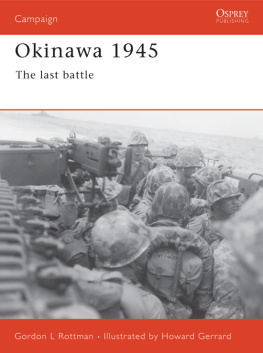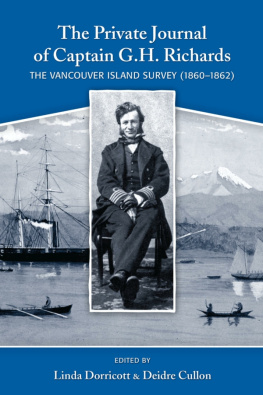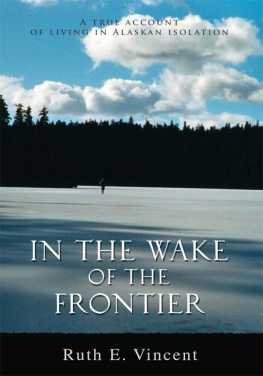A MAGNIFICENT FIGHT

NAVAL INSTITUTE PRESS ANNAPOLIS, MARYLAND
This electronic book has been brought to publication with the generous assistance of The United States Naval Academy Class of 1945
Naval Institute Press
291 Wood Road
Annapolis, MD 21402
1995 by the United States Naval Institute
All rights reserved. No part of this book may be reproduced or utilized in any form or by any means, electronic or mechanical, including photocopying and recording, or by any information storage and retrieval system, without permission in writing from the publisher.
First Naval Institute Press paperback edition published in 2013.
The Library of Congress has cataloged the hardcover edition as follows: Cressman, Robert J.
A magnificent fight : the battle for Wake Island / Robert J. Cressman.
p. cm.
Includes bibliographical references and index.
ISBN 978-1-61251-230-3
1. Wake Island, Battle of, 1941. I. Title.
D767.99.W3C74 1994
940.5426dc20 94-32013
CIP

 This paper meets the requirements of ANSI/NISO z39.48-1992
This paper meets the requirements of ANSI/NISO z39.48-1992
(Permanence of Paper).
21 20 19 18 17 16 15 14 13 9 8 7 6 5 4 3 2 1
First printing
To the Defenders of Wake Island
CONTENTS
The first battle for Wake Island occurred not on the triangular atoll itself but in the United States Congress, which at times appeared to be very reluctant to provide money for that advanced base in the mid-Pacific. Fiscal austerity, however, ultimately gave way to a desperate race against time to fortify the atoll while diplomatic relations between the United States and Japan deteriorated.
The second, more famous battlethe one around which this work centersoccurred between 8 and 23 December 1941, in the aftermath of one of the most devastating defeats in American military history, the Japanese air raid on Pearl Harbor. Soon after Vice Admiral Nagumo Chuichis carrier-based planes attacked the U.S. Pacific Fleet at Pearl, on the other side of the International Date Line, Japanese land-based bombers pounded Wake Island. Over the next two weeks, Wake was bombed almost daily either by land-based medium bombers or flying boats.
Wakes determined defenders held out and in so doing provided a badly needed lift to American morale, a ray of hope in the midst of dark clouds of despair. Wake proved such a tough nut to crack (its seacoast batteries and aggressively handled Wildcat fighters drove off one landing attempt) that Admiral Yamamoto Isoroku, commander in chief of the Combined Fleet, had to order the First Air Fleet, whose planes had ravaged Admiral Husband E. Kimmels battle line, to detach forces to soften it up for a second try.
In 1994, when the concept of jointness seems to dominate the thinking of the modern American military in the aftermath of Desert Shield/Desert Storm, it is an interesting parallel to note that Wakes defense force in 1941 reflected a true multiservice effort born of desperate improvisation: an understrength marine defense battalion detachment and a composite aviation unit equipped with a dwindling number of fighter planes, augmented by sailors and volunteer civilians. An army signal corps radio unit was the garrisons only contact with the outside world. The defense was commanded and coordinated by a naval aviator.
Much that has been written suggests that the defense of Wake was a magnificent improvisation born on 8 December 1941 (west longitude date), in the tradition of Americans spontaneously uniting to face a common adversary. War planners, however, contemplated such an improvisationand planned for itas early as the summer of 1941, long before the first bombs fell.
A Magnificent Fight is the first Western study of Wakes defense to rely on extensive Japanese materialsmany never before used by or unavailable to historiansto document the oft-neglected enemy perspective, identifying the enemy order of battle and the roles each unit played. This book also details the activities of those brave American civilians who volunteered to serve alongside the marinesand thus share the same privationsand those who carried out vital support duties.
Many people assisted in the preparation of this book. Unfortunately, a mere recitation of names reflects neither the contribution of each person nor the indebtedness I feel.
I thank my friends and colleagues at the Naval Historical Center, including John C. Reilly, Jr., Raymond A. Mann, and James L. Mooney of the Ships Histories Branch; John E. Vajda and Tonya T. Montgomery of the Navy Department Library; Edward J. Marolda, Gary E. Weir (who had to listen to Wake Island tales in the carpool), Robert J. Schneller, Richard A. Russell, and Curtis A. Utz of the Contemporary History Branch; Edwin C. Finney, Jr., of the Curator Branch; Roy Grossnick and Steven D. Hill of the Aviation History Branch; and especially Bernard F. Cavalcantes magnificent research staff in the Operational Archives: Kathleen M. Lloyd, Richard M. Walker, John L. Hodges, Ariana A. Jacob, and Regina T. Akers.
At the Marine Corps Historical Center, I thank Brigadier General Edwin H. Simmons, USMC (Ret.), Richard A. Long, Robert E. Struder, Catherine A. Kerns, Steve Hill, Danny J. Crawford, Robert V. Aquilina, Anne Ferrante, Benis M. Frank, Evelyn A. Englander, and Amy Cantin, as well as those formerly associated with the Center, Joyce E. Bonnett, Lance Corporal Tom Clarkston, Gunnery Sergeant Bill Judge, J. Michael Miller, and the late Regina Strother.
Former Wake Islanders who proved most helpful include Brigadier Generals Woodrow M. Kessler and John F. Kinney, Colonel Arthur A. Poindexter and Major Robert O. Arthur, Sergeant Major Robert E. Winslow, Master Sergeant Walter A. Bowsher, Gunnery Sergeant Walter T. Kennedy, Lieutenant Commander George H. Henshaw, Clifford E. Hotchkiss, and Charles R. Loveland. Brigadier General Robert E. Galer and Colonel Milo G. Haines provided recollections of life in VMF-211 in 1941. I extend special thanks to family members of Wake Islanders, especially Henry Elrod Ramsey, nephew of the late Captain Henry T. Elrod; Mrs. Virginia Putnam (who allowed me use of her husbands papers); Mrs. Hilda Hesson; Mrs. Marylee Fish; and George Halstead, whose late brothers letters from Wake, arriving when I was recovering at home from a heart attack, inspired me to press on and tell the Wake Island story as it had not been told before.
Also of great assistance were Major John Elliott, USMC (Ret.); Technical Sergeant Barry Spink, USAF, of the Air Force Historical Research Agency, Maxwell Field, Alabama; R. E. G. Davies of the Aeronautics Branch of the National Air and Space Museum, Washington, D.C.; Ann Whyte of Pan American Airways; Barry Zerby and Richard von Doenhoff at the National Archives in Washington, D.C.; Kathleen OConnor at the National Archives Pacific-Sierra region facility in San Bruno, California; Margaret Goostray of the Boston University Library; David W. Lucabaugh, a tireless researcher in the subject of naval aviation and the one who first provided me with material on the Wake Island Wildcats; Stan Cohen, who shared the information he had gathered on the civilian contractors; the late Captain Roger Pineau, USNR (Ret.), who proved very helpful concerning the Imperial Japanese Navy; and John DeVirgilio, who provided me with anecdotes concerning Japanese carrier operations against Wake. Invaluable for helping me to acquire material in Japan were Captain Chiyaha Masataka and Kageyama Kichir. D. Y. Louie provided superb assistance in translating some of the Japanese documents.
Next page





